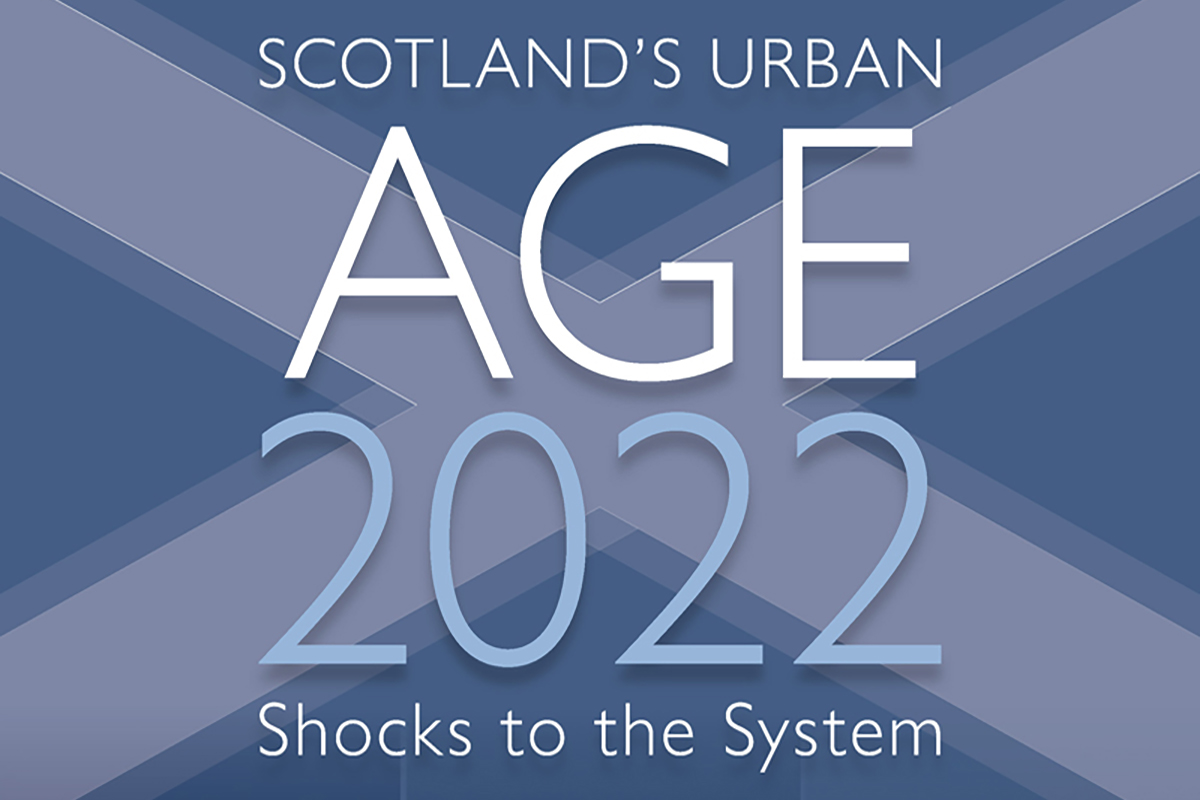
In 2018, the Glasgow Urban Lab published Scotland’s Urban AGE: Aberdeen, Glasgow & Edinburgh in the Century of the City as a review of Scotland’s three principal cities and their regions. The document considered the international context to Scotland’s principal cities, reviewed their performance against a range of measures, drew some strategic conclusions and made a series of recommendations about the future (SUA-1). A lot has happened since.
SUA-1 was undertaken by the Glasgow Urban Lab working in conjunction with Yellowbook and Ryden and was a tour d’horizon of Scotland’s principal cities, picking up on international research by the Glasgow Urban Lab for the UNECE to take a more expansive view of places seen by some as ‘wee cities in a wee country. The starting point was recognition that, in world terms, the future is urban and, by reflecting on international trends, it is possible to set Scotland and her principal cities within these trends to investigate the extent to which they were reflected at home. We found that they were, but this wider view can be lost in parochial noise within the intra-Scottish urban system, and UK and international city league tables. We found that the AGE cities (Aberdeen, Glasgow, and Edinburgh) have the potential to fare well in international milieux, that they have more in common than separates them, and that they sit at the apex of an interrelated urban system in Scotland within the UK and European contexts.
One of the rewarding legacies of SUA-1 was closer working between the Chambers of Commerce for the three cities and these organisations, have asked for this update to consider how the cities are faring in the troubled waters at the start of the 2020s by posing the questions nagging at everyone – what has changed? what has stayed the same? and what’s new?
Scotland’s Urban AGE 2022: Shocks to the System (SUA-2), updates SUA-1 in the light of the COVID-19 pandemic, engages with the challenges of the climate emergency (brought into sharp focus in Scotland by COP26) and reflects on the legacy of the Global Financial Crash and Brexit. These have, and are, causing shocks to the system – and they interact. Together they stoke uncertainty and make already difficult challenges even more keen. The cumulative effects, without understanding, judgement and leadership, could be toxic for our cities and their peoples.
COVID has had a serious impact on those in the front line and it has had a collective and frequently negative effect on communities and individuals – anxiety abounds. For those of us whose work affords the opportunity for reflection away from the immediate fog of the emergency, it was clear that the imperative of combatting the effects of the pandemic would inevitably be cojoined with tackling the climate emergency and would lie under the long shadows of the financial crisis and Brexit. As this work was is finalised, we reel from the further international shock of a serious international war in Europe. So, the title of the report reflects the state of being in which we find ourselves. We have engaged with the shocks to the system of (COVID-19, the Climate Emergency, the GFT and Brexit), the flux these are causing together and the intrinsic resilience to handle these forces – or not. Thinking along these lines also presages our collective view that scenarios and systems will be as important as plans and projects going forward.
There is therefore something around agility, resilience and trajectories that might guide active but measured action. Sustainability is overused, but perhaps stability, systems and scenarios might have more utility in helping establish a dynamic equilibrium for the AGE cities. The dynamic nature of cities has tempered our thinking, particularly just now. There is no end state, no arrival – cities need to be dynamic, or they decline. We contemplated adding 2030, when some of our cities intend to be net carbon zero or 2040, the horizon for NPF 4, 2045 when Scotland will be net-carbon zero, 2050 when the UK will join the party. But if 2030 turns out to be 2029, is it a cause for celebration? Or is 2032 a failure, well hardly, after all Tokyo 2020 was held in 2021. So we settled on 2022 – to distinguish SUA-1 from SUA-2 and to recognise its point in time.
Finally, this report, as the first one, unapologetically concentrates on Scotland’s three principal cities and their regions – the Aberdeen Glasgow and Edinburgh of Scotland’s Urban AGE. We will see that their concentrations of populations, wealth and knowledge remain of pre-eminent importance to Scotland’s well-being. They are a litmus test of Scotland’s future, but as we always stress, they cannot and should not be seen apart from the vibrant interconnected system of cities and towns across Scotland, nor indeed from the wider UK and Ireland, Europe’s anglophone supercity. This truly is a whole that is greater than the sum of its parts.
Download Scotland's Urban AGE 2022: Shocks to the System.
Brian Evans, John Lord, Mark Robertson